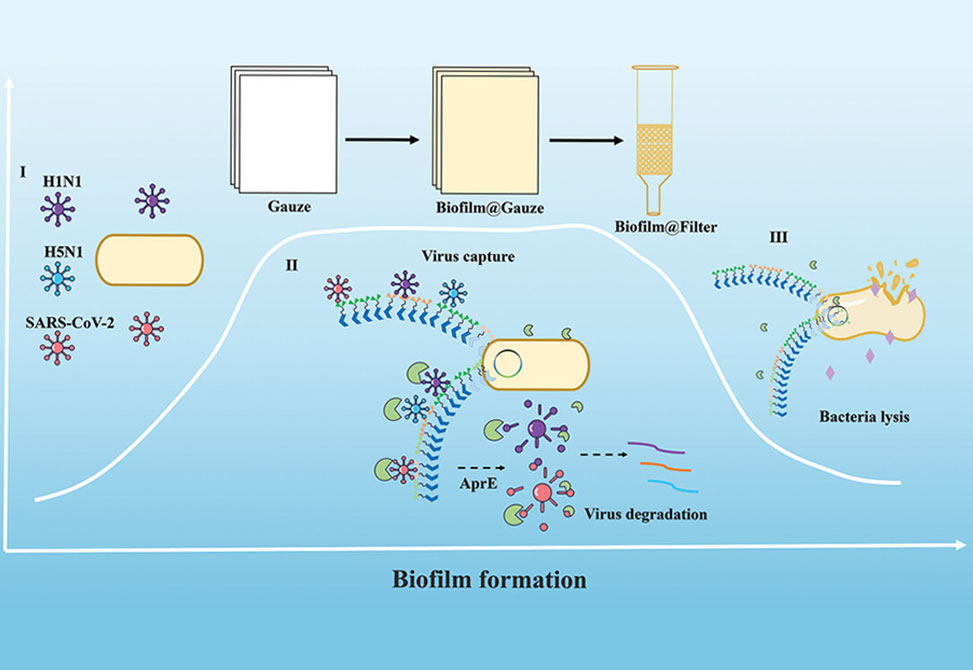Virus Disinfection
Reflecting work in the The Huang Lab
Global pandemics caused by pathogenic viruses have highlighted the need to develop effective and sustainable materials to defend against these viruses. However, most commercial viral disinfection materials rely on precious metals, which are toxic.
In this study, under the direction of Professor Jiaofang Huang at the East China University of Science and Technology, an engineered living material based on Bacillus subtilis biofilms is presented that can effectively remove Influenza A virus and SARS-CoV-2 from water.
First, B. subtilis biofilm is used to display the H1N1 and H5N1 specific binding peptide C40 and SARS-CoV-2 specific binding peptide SBP1; thus, the biofilm materials has outstanding efficacy against H1N1, H5N1, and SARS-CoV-2 pseudovirus from water. In addition to capturing the virus, these biofilm materials can also inactivate the virus by secreting alkaline protease AprE, which effectively degrades the viral proteins at temperatures of 4, 16, 25, and 37 °C.
Furthermore, to constrain bacterial growth and prevent the leakage of genetically modified organisms, a suicide genetic circuit using the quorum-sensing system ComQXPA to control Lytc expression is constructed, leading to bacterial lysis.
Overall, this study demonstrates a novel, effective, and sustainably engineered living material for preventing viral transmission. This material provides a safeguard for public health and promotes environmentally friendly governance.


